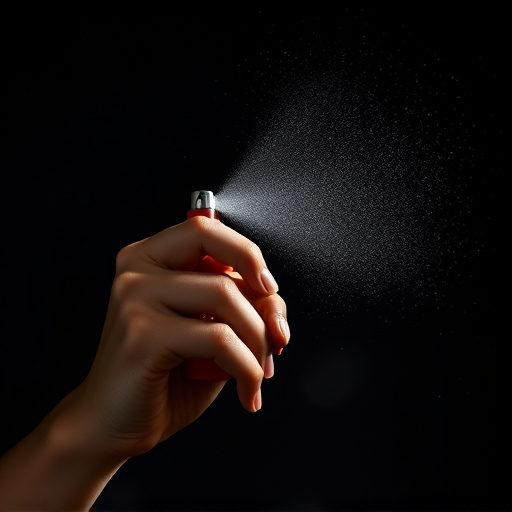Riot control agents, like defensive pepper spray (oleoresin capsicum), are chemical weapons used by law enforcement for crowd control without causing permanent harm. Effective use of these agents, within a 2-3 meter (6-10 foot) distance range, requires proper training, equipment maintenance, and understanding their effects. This ensures public safety while preventing misuse. The optimal defensive pepper spray distance range, ideal for close to medium-range encounters, allows targeting the attacker's face and respiratory system. Balancing public safety with civil liberties demands clear guidelines, adequate officer training, regular policy reviews, and transparent reporting for effective deployment during disturbances.
Riot control agents, including defensive pepper spray, have become integral tools for law enforcement in managing civil unrest. This article delves into the legal framework surrounding these agents and safety measures paramount for their responsible use. We explore the specific characteristics of defensive pepper spray, focusing on its distance range and effectiveness as a non-lethal force option. Furthermore, it examines the implementation and enforcement of laws governing riot control agent use, highlighting best practices to ensure public safety during high-stress situations.
- Understanding Riot Control Agents: Legal Framework and Safety Measures
- Defensive Pepper Spray: A Closer Look at its Distance Range and Effectiveness
- Implementing and Enforcing Laws on Riot Control Agent Use in Law Enforcement
Understanding Riot Control Agents: Legal Framework and Safety Measures
Riot control agents, often referred to as less-lethal weapons, are chemical compounds designed for law enforcement and military purposes during civil disturbances or mass gatherings. These agents are intended to incapacitate or disrupt individuals temporarily without causing permanent harm. The legal framework surrounding their use varies by jurisdiction but generally permits their deployment when conventional crowd control methods prove ineffective.
Safety measures are paramount when handling and using riot control agents, especially defensive pepper spray. The recommended defensive pepper spray distance range is crucial for minimizing exposure and ensuring officer safety. Proper training on usage, equipment maintenance, and understanding the agent’s effects are essential to prevent misuse and protect both law enforcement officers and the public.
Defensive Pepper Spray: A Closer Look at its Distance Range and Effectiveness
Defensive pepper spray, also known as oleoresin capsicum (OC) spray, is a popular tool in law enforcement and self-defense scenarios due to its non-lethal nature and effectiveness in neutralizing aggressors temporarily. One of the key aspects that users often consider when choosing this agent is the defensive pepper spray distance range—how far it can reach and still be effective.
The distance at which defensive pepper spray is effective can vary based on several factors, including the brand and model of the spray, environmental conditions, and proper application technique. Typically, these sprays are designed to be used in close to medium-range encounters, usually within 2-3 meters (6-10 feet). This range allows users to deploy the spray directly onto the attacker’s face, eyes, and respiratory system, causing temporary blindness, coughing, and difficulty breathing, thus providing enough time for the subject to disperse or be subdued. However, it’s important to note that wind, weather conditions, and obstacles can affect the spray’s trajectory and reach, making longer-range applications less reliable.
Implementing and Enforcing Laws on Riot Control Agent Use in Law Enforcement
Implementing and enforcing laws regarding riot control agent use in law enforcement is a delicate balance between public safety and respect for civil liberties. The strategic deployment of these agents, such as defensive pepper spray, requires clear guidelines and strict adherence to protocol. Law enforcement agencies must ensure that officers are trained adequately on the defensive pepper spray distance range, its effectiveness, and the potential risks involved.
This includes knowing when and where it’s appropriate to use such force, understanding the legal implications, and being cognizant of bystanders. Regular reviews and updates of policies can help keep practices current with technological advancements and changing societal norms. Effective enforcement involves consistent monitoring, accountability measures, and transparent reporting to build public trust while ensuring officers have the tools they need to maintain order during high-risk situations.
Riot control agents, such as defensive pepper spray, play a significant role in law enforcement strategies. Understanding their legal framework and safety measures is crucial for effective implementation. The article has explored the defensive pepper spray’s distance range and effectiveness, highlighting its importance in crowd control. Additionally, it emphasized the need for strict laws and training to ensure responsible use, balancing public safety with respect for civil liberties. By adhering to these guidelines, law enforcement agencies can navigate riot situations while upholding justice and minimizing harm.
